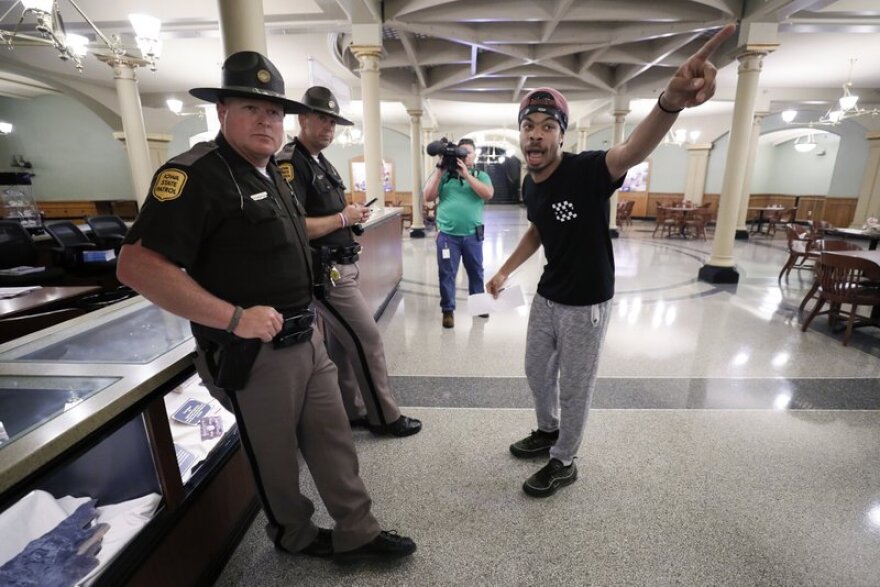State police officers in Iowa drew their guns and used force against suspects significantly more often in 2020 than previous years due to a major increase in resistance, according to an internal report obtained by The Associated Press.
Suspects fled in vehicles and on foot from officers working for the Iowa Department of Public Safety far more often in 2020 and were more likely to punch and kick officers and to threaten them with weapons, according to data in the department’s annual use of force report.
Officers, who include members of the Iowa State Patrol, responded by drawing their handguns, shotguns and rifles 269 times in 2020, an 83 percent percent increase from the prior year, the report found. They also took or ordered suspects to the ground in dozens of more cases compared with 2019.
While rare, officers also fired their weapons, deployed chemical spray, shot nonlethal munitions such as rubber bullets, intentionally struck vehicles and used stun guns more often in 2020 than 2019, the report found.
Officers discharged their weapons in two cases in 2020 compared with none in 2019, killing one person, an armed Black man who had allegedly threatened to shoot a female hostage in Webster City. He was the only person killed in any of the incidents, while at least three dozen other suspects suffered visible injuries. Twenty injuries to officers resulted in at least some medical treatment, while many others were categorized as minor.
“Officers reported a substantial increase in subject resistance in 2020, resulting in a significant increase in officer force from the previous year,” according to the report, which was approved March 24 by Public Safety Commissioner Stephan Bayens and obtained under the open records law.
The 22-page report did not seek to explain what was causing more suspects to resist officers and did not mention either the pandemic or the nationwide protests against racial injustice and police brutality. The increase in force cases began in January 2020 and continued most of the year across the state, decreasing only in April compared with 2019, according to the data.
Just like 2019, Black people comprised a disproportionate number of those involved. Black people make up about 4.1 percent of the state population, but represented about 30 percent of those involved in the incidents, the report found.
The data comes from detailed reports that officers must complete whenever they use force, regardless of whether injuries result.
The report highlights that force cases represent a tiny fraction of the 214,000 calls for service officers were involved in and that relatively few officers or suspects were seriously injured. Less than 1 percent of the incidents were determined to be violations of department policy.
“DPS officers continue to use the minimum amount of force necessary to establish control while keeping subject injuries low,” the report said. “Officers report high effectiveness rates for most force options and use sound decision making in lethal force situations.”
Most of the increase involved cases in which officers drew weapons or threatened to use force but did not actually do so, corresponding with the increase in fleeing suspects, the report found. Officers are expected to display their weapons during vehicle pursuits until they determine the suspect is unarmed and can move to other force options, it said.
The increase in force came during a year in which Iowa lawmakers sought to decrease tensions between officers and the citizens they serve. A bipartisan law approved in June restricted the use of chokeholds by officers and required all law enforcement officers to attend annual training on de-escalation techniques and bias prevention.
The report said all sworn officers will complete training courses on those subjects, and that de-escalation will be incorporated into required defensive tactics training.



